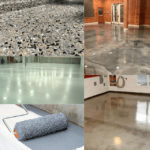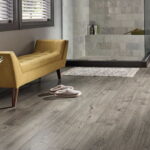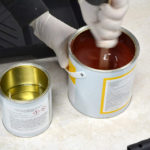Floor coatings are floor covers for garages, warehouses, basements, stores, restaurants and manufacturing facilities. They provide an extra layer of protection against abrasion, moisture, chemicals and heavy traffic. Furthermore, concrete coatings can simplify maintenance, improve skid resistance and improve the look of the surface. However, not all floor toppings are made the same. There are many different types, each of them suitable for different applications.
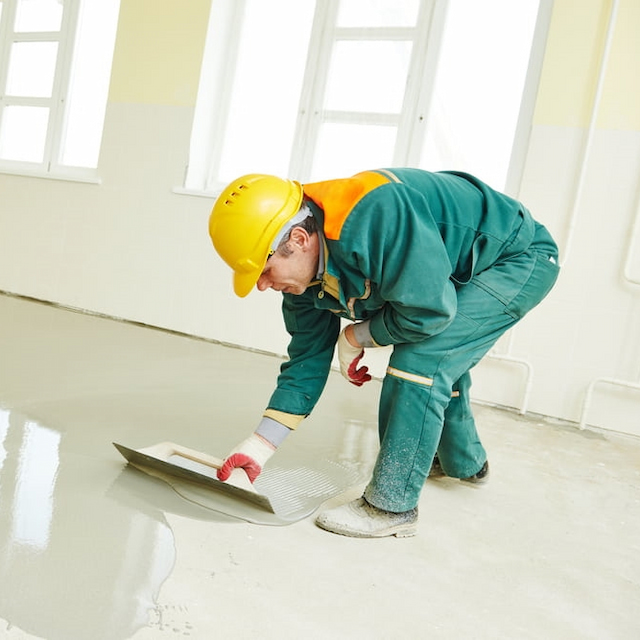
Types of Coatings for Concrete
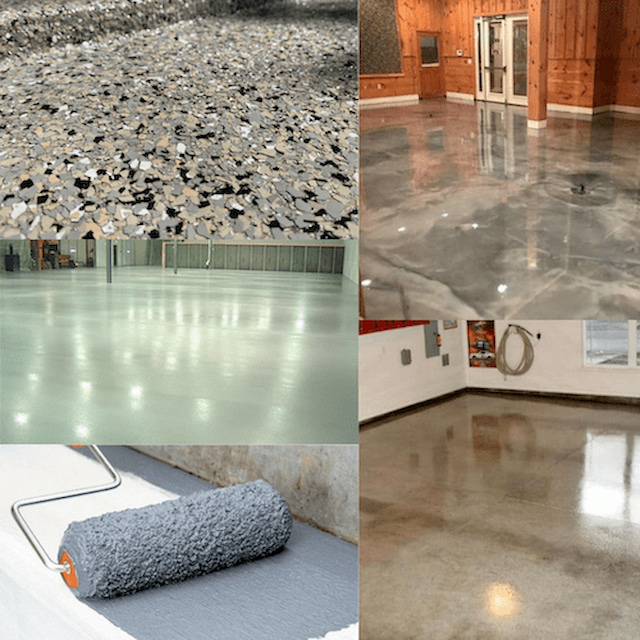
The number of concrete coatings is immense, as manufacturers are looking to meet all market demands, constantly coming up with new formulas that improve the curing time, provide better abrasion resistance, adhere better to the surface, etc. Many coatings come with an abundance of decorative options, including a huge range of mix-in pigments and other ingredients to achieve the desired visual effects.
However, with so many options available, shopping for the right coating can be tedious. The number of different products can be overwhelming, and every product comes with different properties in terms of economy, appearance, performance and ease of application. So, it takes careful consideration to find the most practical and economical solution.
Comparing every concrete coating product available is literally impossible, since there are thousands to choose from. So, I’ll list the most advanced coatings that provide the best performance and are user-friendly to use. These coatings generally cost more than traditional coatings, but they provide long-term benefits, making them more valuable. Some of them even provide special decorative effects, like luminescent or metallic finishes.
Comparing Different Coatings
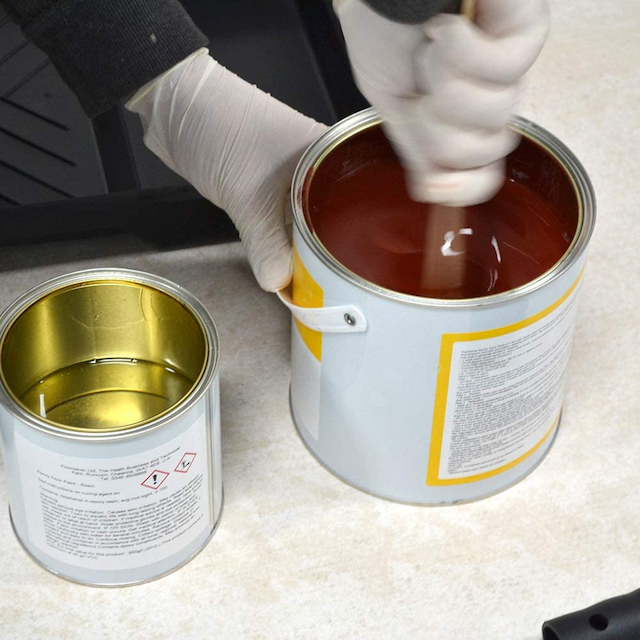
Floor coatings are liquid or semi-solid materials applied to cured concrete surfaces, such as cement-based toppings, paints, overlays and epoxy-aggregates. For simplicity’s sake, I’ll only discuss non-cementitious polymers applied at 1.5mm thicknesses. Without getting too much into it, polymers are chemical compounds or mixtures of compounds. The most popularly used concrete floor coatings today are hybrids of four basic polymers: polyureas, urethanes, epoxies and acrylics. Due to the nature of polymer coatings, most manufacturers play around with their properties and molecular makeups to improve their performance, curing times and VOCs. That being said, you should first look at the product’s data sheet and technical specs. Those are the best way to find out the products’ performance and installation info. Many of the spec sheets are available even online. Furthermore, evaluate the surface you’ll be applying the coating so you have an easier time deciding on the protection requirements, budget, time of installation, aesthetic goals, etc.
Epoxy Coatings
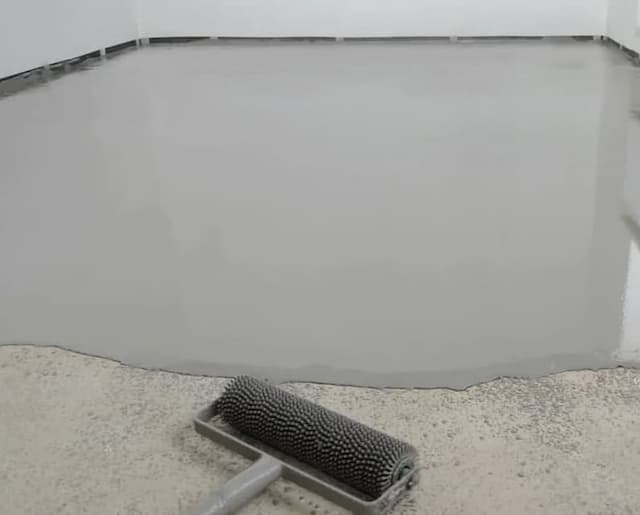
Epoxy coatings have been used on concrete floors in industrial settings for many years. Lately, they’ve also seen their fair share of applications in residential garages. Many professionals like them due to their long-lasting and high-gloss finish that provides superior abrasion resistance and hardness. However, they still have their disadvantages, such as requiring long concrete curing before application, a tendency to yellow when exposed to sunlight and loss of adhesion when exposed to moisture. Most epoxy coatings are two-component systems that need to be mixed at the right ratio to be used.
In order to overcome their downfalls, most manufacturers have come up with advanced epoxy products that provide better UV stability, faster curing times and better permeability. There are also one-component epoxies that don’t require mixing before use. These are more user friendly, and can are suitable for both industrial and residential applications, including basements, showrooms, gas stations, restaurants, driveways, garage floors, etc.
Most epoxy coatings are impermeable to moisture and can fail when applied to moist substrates or slabs where moisture vapour is high. To avoid these issues, there are breathable epoxies that let the moisture pass through them. Some of them can even be installed on damp substrates after only a few days of curing, making them ideal in applications where speed is a must.
Polyaspartic Coatings
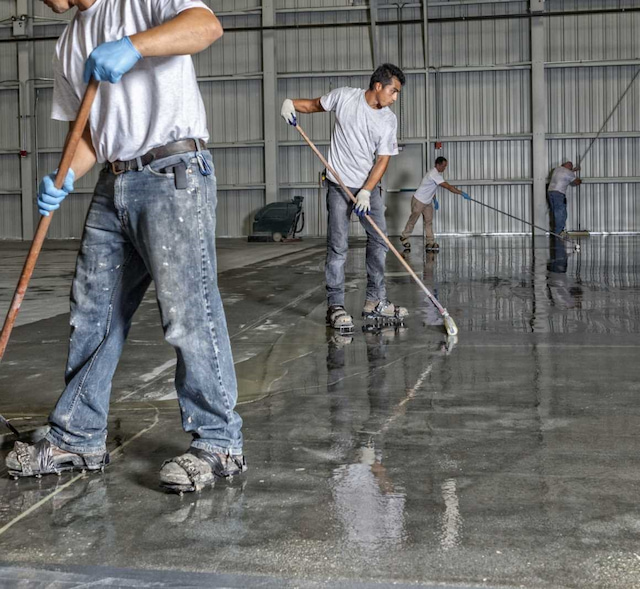
These coatings are the newest coating products on the market, and are becoming increasingly more popular due to their fast setting times. In fact, most manufacturers claim they can be installed in a day from start to finish. Even though a variety of these coatings has been available since the 80s, polyaspartic coatings are a relatively recent innovation, and they provide improved performance and easier installation. Furthermore, they can be applied to full-thickness in a single coat, better impact and abrasion resistance, the ability to be installed at low or high temperatures, and great UV stability with great bonding characteristics. Polyaspartic coatings are ideal for industrial and residential applications and are used for driveways, retail facilities, garage floors, showrooms, warehouses and other surfaces prone to heavy wear and tear.
On the downside, they can be quite costly, and they’re generally more expensive than other types of coatings. However, when you consider the reduced downtime and labour costs, the higher expense can be justified.

